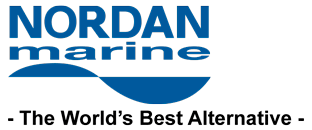Calibration Of Cargo Measuring Equipment
The liquefied petroleum gas (LPG) vessels are innovative and the basic cargoes they carry are propane and butane. The cargo tanks have composite walls to keep the gas temperature at the required levels. LPG ships that go to small terminals have pressurized tanks, so the load is compressed to liquefy and maintained at a positive pressure. Larger LPG ships have semi-pressurized tanks, which means that the load is maintained, cooled and compressed to liquefy under positive pressure.
During the journey of the potential, some of its cargo may be vaporized due to rising temperatures. These vessels have equipment that resets the vaporized cargo through the process of removing moisture and cooling the vaporized cargo. An important prerequisite is to pay close attention to the unloading of LPG ships as the cargoes are considered dangerous.
Before loading, the tanks are prepared, i.e. cooling. Cooling should be done by lowering the temperature in the tank to 10 ° C per hour, in order for the plates to be resistant and not to be broken by a sudden change in temperature. The precautionary measures on these vessels are high because of the risk of cargo. At the same time, they are staffed by specially trained personnel with specific experience who can handle any particularities of the cargo being transported. LPG ships cost between $ 40 million and $ 70 million depending on their size and their market is considered stable as there is demand from all countries around the world.
The number of LPG ships available is not very large, which makes their purchase completely controlled without abrupt changes. Entering the market is not particularly difficult, but claiming a large market share is not easy as there are big players in the industry. As an investment, LPG ships are one of the best choices for shipowners who want to diversify. They are sustainable ships in the sense that they have high revenues and a fast payback period. Therefore, these are technologically innovative ships that are a very good investment choice.
LEG ships are state-of-the-art vessels. They carry liquefied ethylene which has already been cooled to -104 ° C. Their cargo tanks are state-of-the-art and feature special nickel and chromium alloys processed to withstand very low temperatures. The cargo tanks have multiple walls to maintain the required temperature. It is usually semi-pressurized, ie the load is cooled and at the same time compressed under positive pressure.
Importance of Cargo Measuring Equipment
LEG ships require trained and skilled personnel capable of meeting the cargo requirements. Preventive measures for the safety of human life and the environment are strict because the cargo is dangerous. The loading and unloading process requires special treatment and cooling before loading is brought to the tanks by lowering the temperature to 10 ° C per hour. This process requires patience and proper management with uninterrupted crew control. The new LEG boats have advanced dual fuel engines, that is, they can use the cargo that is vaporized as fuel in the propulsion engines. They also have a system for resetting any vaporized load. These vessels can also carry other liquefied gases, that is, they can also be used as LPG ships. The price of a LEG ship is estimated at between $ 80 and $ 90 million. There are about a hundred such ships around the world. This makes their market very stable. It is the best choice for anyone who wants to differentiate themselves by entering a new market. Therefore the market for LEG ships is a category of innovative technology ships with high expectations for the future

